The Place
The second location of Maolago – a sanctuary to all things Guizhou comfort food, with an emphasis on Miao cooking heritage – opened this past April on Julu Lu, just above yet another Oha Group (Oha Eatery, Dead Poet, Bar No. 3) outpost, Pass Residence.
READ MORE: Maolago – A Sanctuary of Guizhou Comfort Food
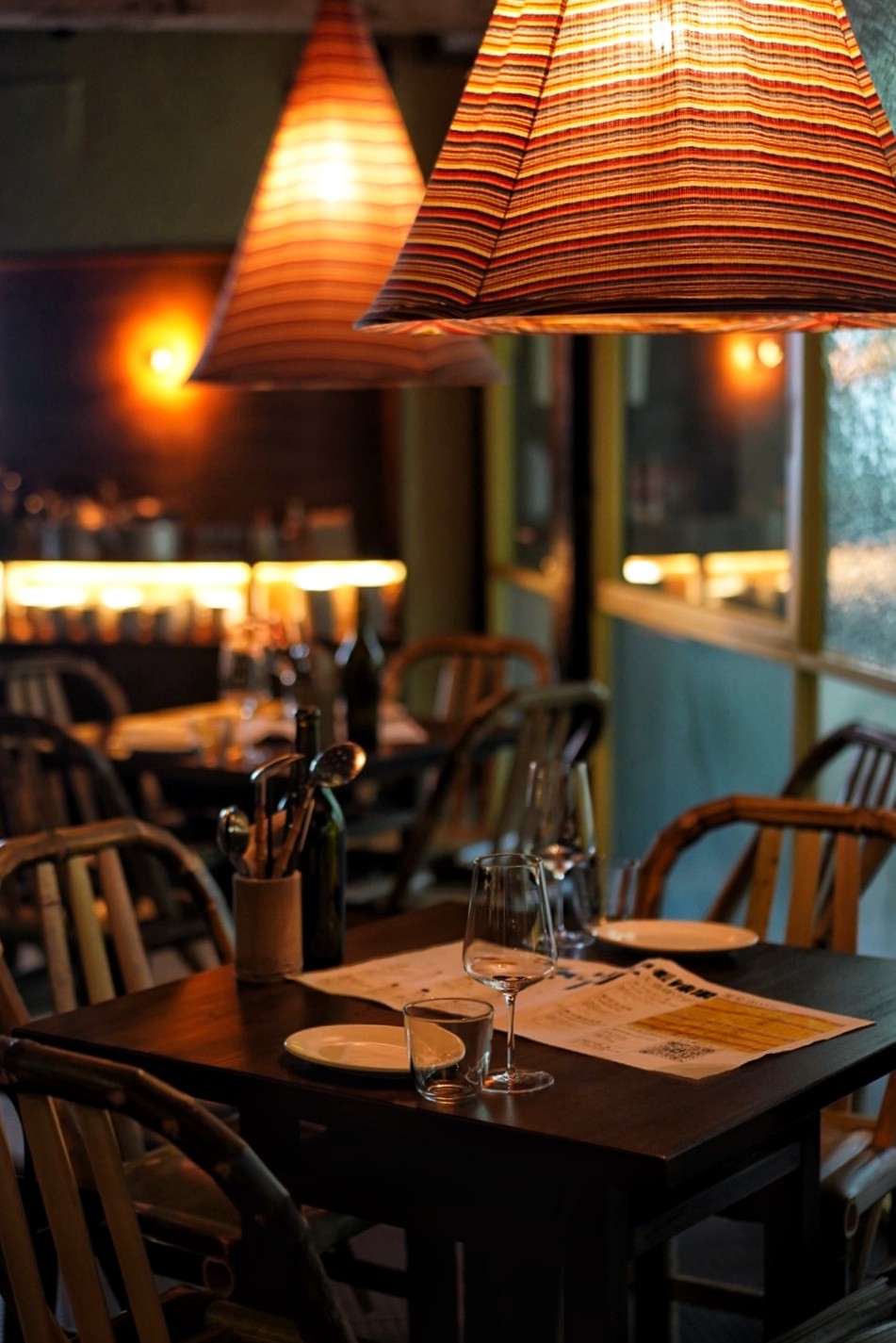
Image by Sophie Steiner/That's
But this is not the customary copy-and-paste duplicate you might have been expecting. In fact, it levels up on Guizhou flavors, building on the boldly sour tastes of the region with an added layer of bitter complexity.
While the venue does offer many of the most popular items from the original Fuxing location, diners looking for bona fide Guizhou cuisine with a hit of ingenuity should make their way over to the Julu Lu spot.
Here, herbs, spices, veggies, cured meats and the restaurant’s signature dish’s fermented master stock are sourced directly from boutique farmers and suppliers in Guizhou, and shipped every other day to Shanghai for maximum freshness and authenticity of taste.

Image by Sophie Steiner/That's
And Maolago is just that – a refined representation of the provincial flavors with a strong focus on honoring local ingredients.
Whimsy is definitely still a key defining factor, especially in the small plates, but there is a streak of restraint that makes each dish enjoyable to a broader audience, not just those with a deep understanding of Guizhou’s vegetation ecosystem.
The Food
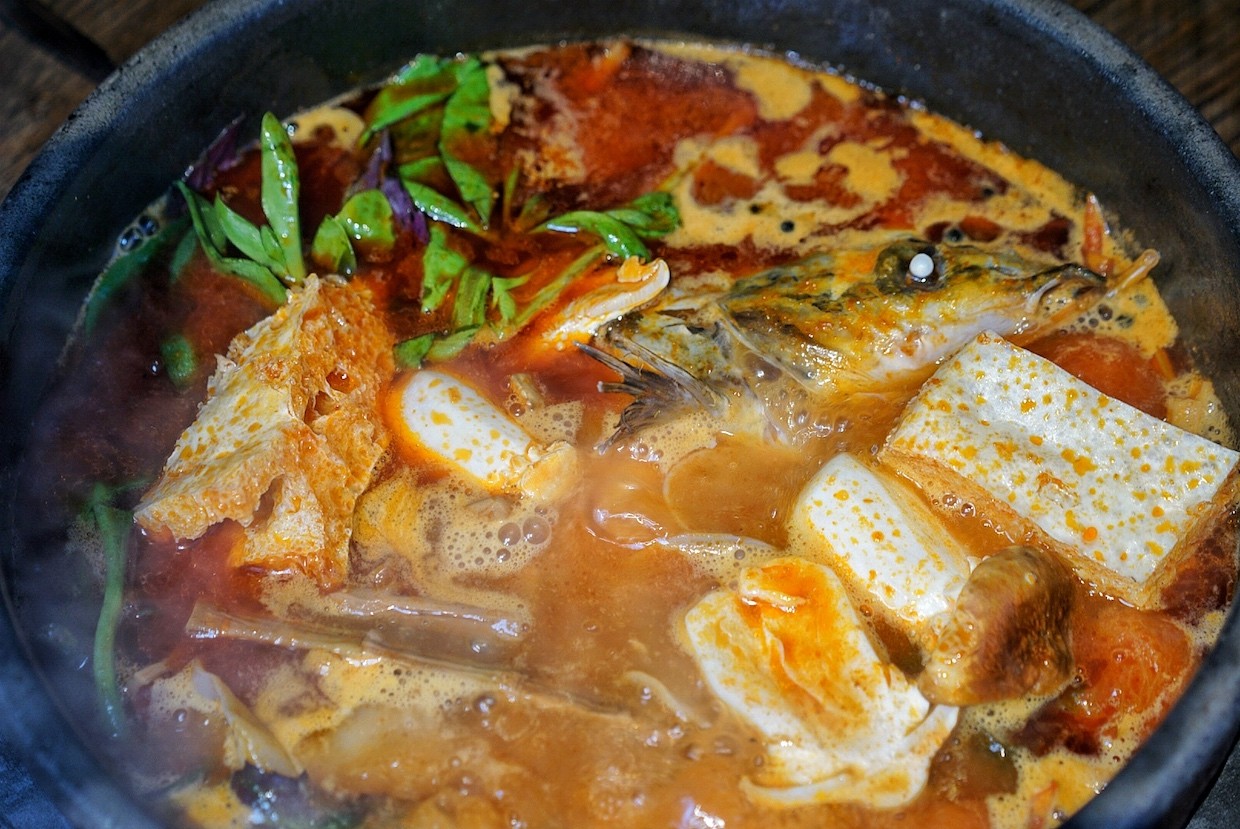
Image by Sophie Steiner/That's
The restaurant’s must-order dish is a Sturgeon Fish in Red Sour Soup (RMB168/500grams), boiled in a Guizhou-grown fermented tomato soup broth, seasoned with green pepper, coriander, lemongrass, fresh yamana and mujiangzi – also known as 'mountain demon berries,' a lemon- and numbing spice-flavored berry that grows in the mountains of Wulong.
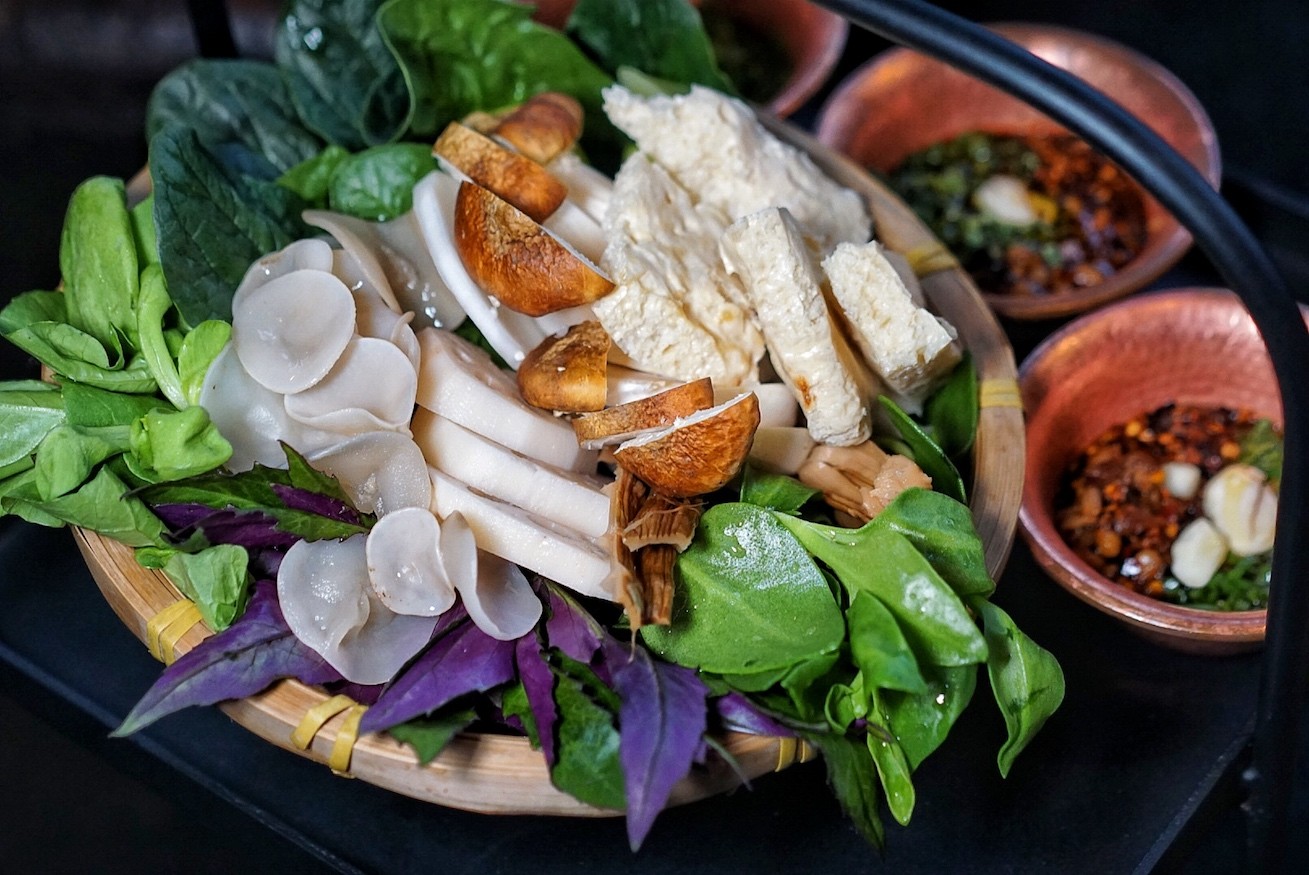
Image by Sophie Steiner/That's
The underdog in this hotpot situation is the pre-prepared dipping sauce that sees a blend of fermented soybean, chili, mujiangzi, shallot, coriander and garlic come together in the most balanced hotpot sauce ever created.
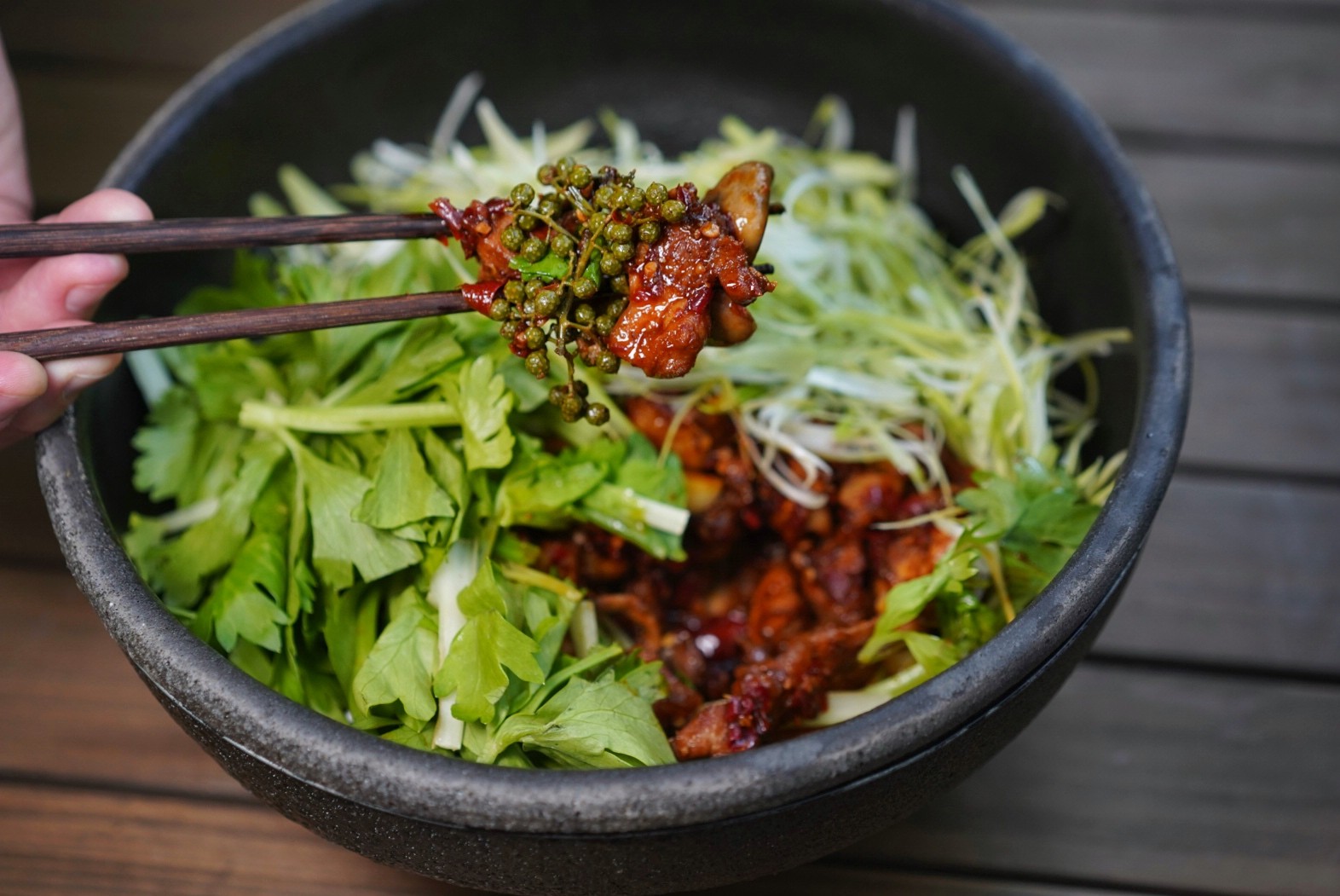
Image by Sophie Steiner/That's
Not feeling fish?
Arguably just as standout – and more spice-forward – the Chili Chicken Dry Pot (RMB238) offers up a fiery stir-fry of de-boned, free-range mature roosters that feed on grains, wild grass and insects.
Slaughtered fresh daily and never frozen – to preserve that crisp skin – everything goes into the pot, from cockscomb to chicken feet.

Image by Sophie Steiner/That's
The meat is succulent, springy and juicy, slathered in a pounded sauce made from Guizhou ciba chili, ginger and whole garlic cloves.
Crunchy peanuts, pine forest-grown button-like straw mushrooms (草菇), celery leaves and spring onion are thrown into the mix tableside, culminating in a chili chicken dish so unlike its Sichuan counterpart that it deserves its own spotlight.

Image by Sophie Steiner/That's
Inherently primal, the tender strips of Grilled Beef Heart (RMB66) are dripping with a Leishan-fermented sauce made from small river fish customarily stored in a bamboo cask.
Slick luffa adds base tone notes, an earthiness that plays well with soy, and – in this case – smoked oil.
A moss-like Yunnan tree flower – a type of fungus with a condensed dried mushroom flavor – crowns said meat, mingling with the innards metallic undertones.

Image by Sophie Steiner/That's
Beloved for its strong minerality, Stir Fried Fiddle Head Fern (RMB58) is sautéed with pork belly, chives, ginger, and Guizhou chilis, rounded with fermented dried bean sauce for extra depth and body.
Pleasantly bucolic in preparation and presentation, this dish is commonly consumed among families in the comfort of their own homes.

Image by Sophie Steiner/That's
A wild, leafy green that grows in Guizhou’s mountain, the Grilled Isatis Peduncular (RMB58) – or 板蓝根 – is grassy and fresh, like asparagus, with nuances of bitter crispness, like arugula.
Prized for its cooling properties according to TCM, the plant is first grilled then plated atop a spiced yogurt and pumpkin purée, sheathed below milk fan (乳扇) crisps.

Image by Sophie Steiner/That's
Similar in appearance to white wood ear mushrooms, the tree-dwelling Hanabiratake Mushrooms (RMB42) are tossed in a roasted green pepper and fig oil sauce, springy with a crunchy chew.

Image by Sophie Steiner/That's
Showcasing a type of sand worm from Zhanjiang, Guangdong, the Fried Peanut Worm (RMB68) sees said invertebrate cleaned and stuffed with fern head, then fried in a light tempura batter.
Stacked like brittle batons atop a sour plum and peanut sauce with ribbons of pickled rhubarb salad, the worms curiously act as a plate of French fries, salty and sizzling.
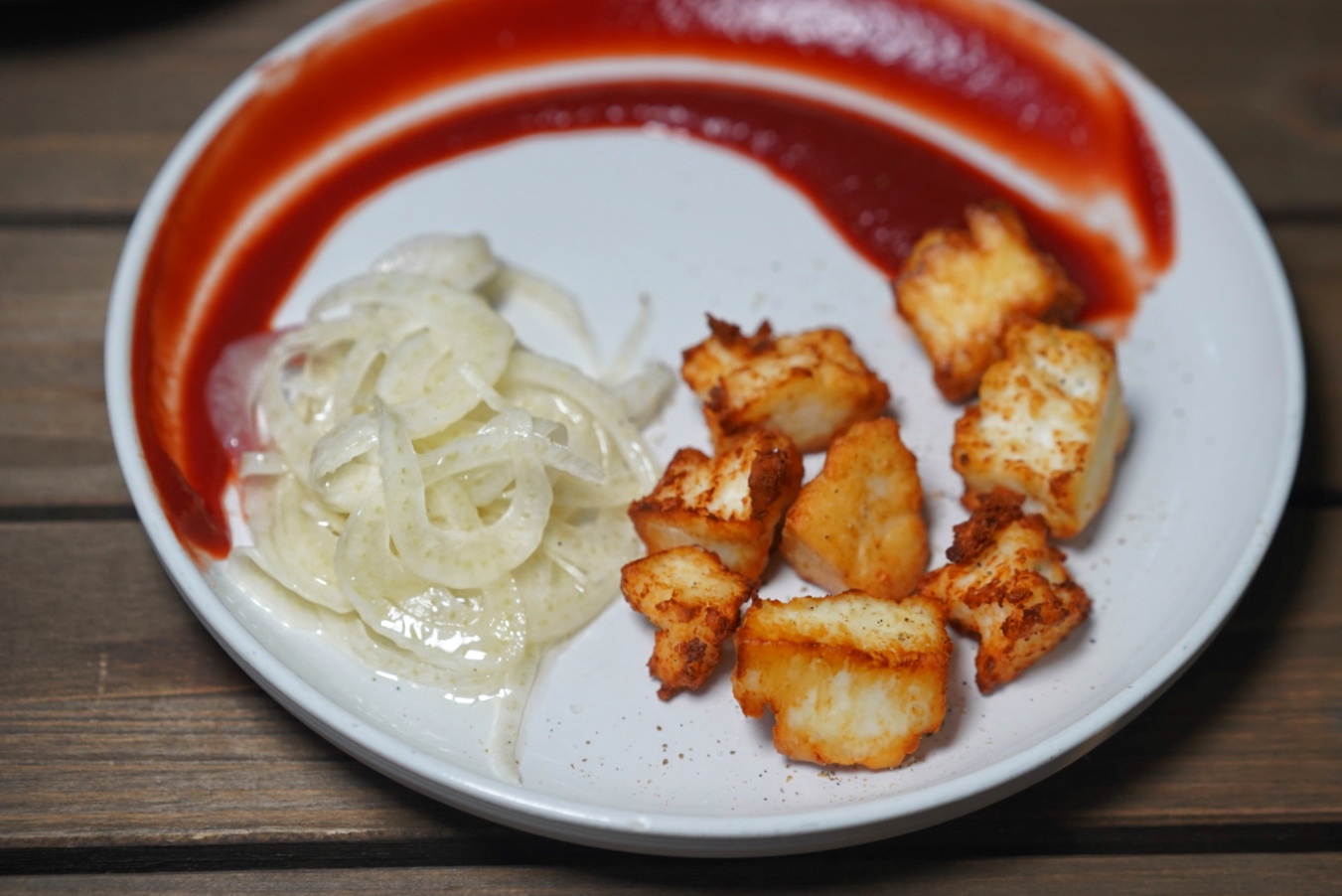
Image by Sophie Steiner/That's
Made from fried goat’s milk cheese cubes, the Dairy Cake (RMB62) is China’s country-style answer to American cheese curds, the ketchup swapped for a more upscale schmear of beetroot and fermented chili sauce, suggestive in both tang and heat of Tabasco.
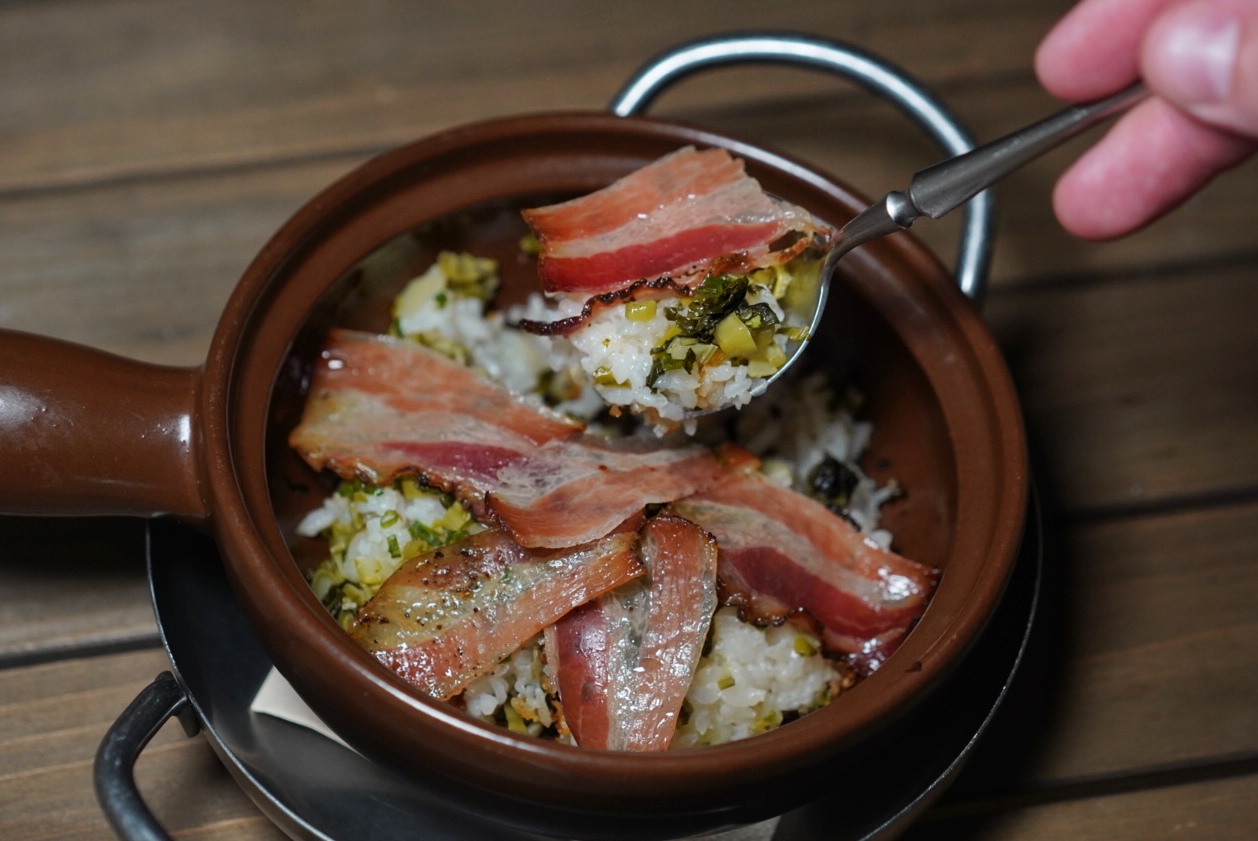 Guizhou Air Dried Ham Mustard Leaf Potato Rice (RMB48), Image by Sophie Steiner/That's
Guizhou Air Dried Ham Mustard Leaf Potato Rice (RMB48), Image by Sophie Steiner/That's

Image by Sophie Steiner/That's
Inspired by Middle Eastern kanafe – a blend of angel’s hair spun kataifi (filo) pastry layered with gooey cheese, all soaked in sweet syrup – the Sticky Corn Cake (RMB48) is a contemporary take on a Guizhou glutinous pounded corn bing.
With a corn cake base (one that is usually steamed in a corn husk, sharing similarities with a Mexican tamale) in place of the stretchy, melted cheese found in kanafe, the pastry is topped with a red sugar cream and a quenelle of whipped mascarpone cheese, all dusted in bean powder.
The Drinks
Sitting at middle ground of wine and cocktails, the menu is graced with eight varieties of Drip Wine – drip referring to the cocktail-like process in which it is made, wine relating to how it should be consumed.
These pre-batched libations are available by the glass and the bottle, made from cold-pressed, filtered and slightly fermented organic fruit, vegetable and herb-based juices, that are then infused with a base liquor.
After a clarification process, the resulting beverages are funky – like natural wine – yet delicate, with an equally subtle presentation.

Image by Sophie Steiner/That's
From the Flax (RMB115) – a demure play on a dirty martini with verbena-infused gin and a drying olive finish – to the more booze-forward Flower Mantis (RMB99) – with Speyside whiskey, bitter gourd juice, elderflower, and balsam pear, tempered by a syrupy, almost viscous mouthfeel owed to the addition of honey – the drip wines mirror (and enhance) the layered nuances in the regional dishes.
The non-alcoholic Drip Wines are just as complicated – in ingredients and process – but offer a more reasonably priced drink without the hangover tomorrow.
Think aromatic pear and fig leaves infused into jasmine green tea, with a lick of coconut oil, for a sultry sip as the Pear & Fig (RMB45); citrusy mountain pepper juxtaposed against tart passion fruit and pineapple as the Spiced Pineapple (RMB48); or zesty aged orange peel paired with treacly oven-toasted osmanthus tea as the Floral Citrus & Tea (RMB46).
The Vibe
The mastermind behind the décor and layout of Maolago is Swing, a Guizhou-native who studied design in both the USA and Milan before moving to Shanghai, and has worked on numerous design and creative direction projects in the F&B space – like Dentree and the revamp of Rye & Co.
Here, she applied rustic elements of her own personal upbringing with a trendy twist, in line with other Oha Group venues.
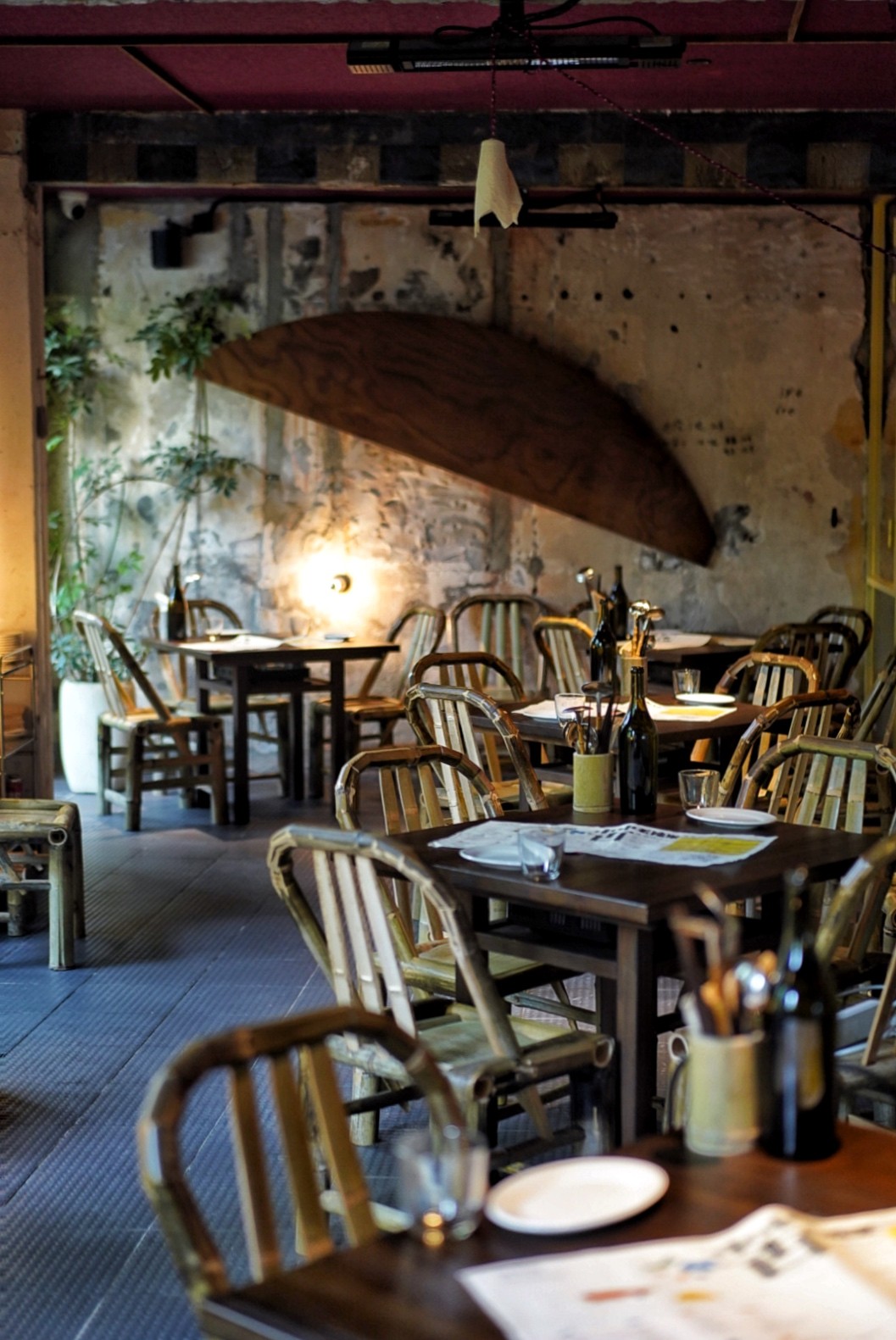
Image by Sophie Steiner/That's
Think earth tones redolent of Guizhou – dark wood, slate and bamboo – coupled with warm lighting downstairs, accented by open bay windows leading out to a 20-seater patio, and more shadowy vibes upstairs, with seating for 40.

Image by Sophie Steiner/That's
Maolago is not another 'modern Chinese' restaurant, where the aim is to make food more appealing to Western palates, insinuating that Chinese cuisine – as is – isn’t good enough.
It’s the opposite, showcasing how memorable and distinct Guizhou food – a mostly unexplored area by the average Shanghai-er – can be, by utilizing air-transported local produce and region-specific vegetables to make the entire experience as authentic as possible.

Image by Sophie Steiner/That's
The food, drinks and overall vibe are more accessible than other ‘fine dining’ Chinese spots, with more compelling and superior quality food offered at significantly better value; the understated yet elegant ingredient presentation is approachable to anyone with an interest in Chinese cuisine.
Plainly stated, this is food to be excited about.
Price: RMB200-400
Who’s Going: Oha groupies, spice addicts, hotpot lovers, Guizhou food fanatics
Good For: Group hotpot dinners that stray from the chili-oil Sichuan style norms, exploring contemporary regional Chinese cuisine, introducing visitors to bona fide yet approachable Chinese food
Maolago, 2/F, 318 Julu Lu, by Shaanxi Nan Lu, 巨鹿路318号2号楼, 近陕西南路.
Read more Shanghai Restaurant Reviews.
[Cover image by Sophie Steiner/That's]





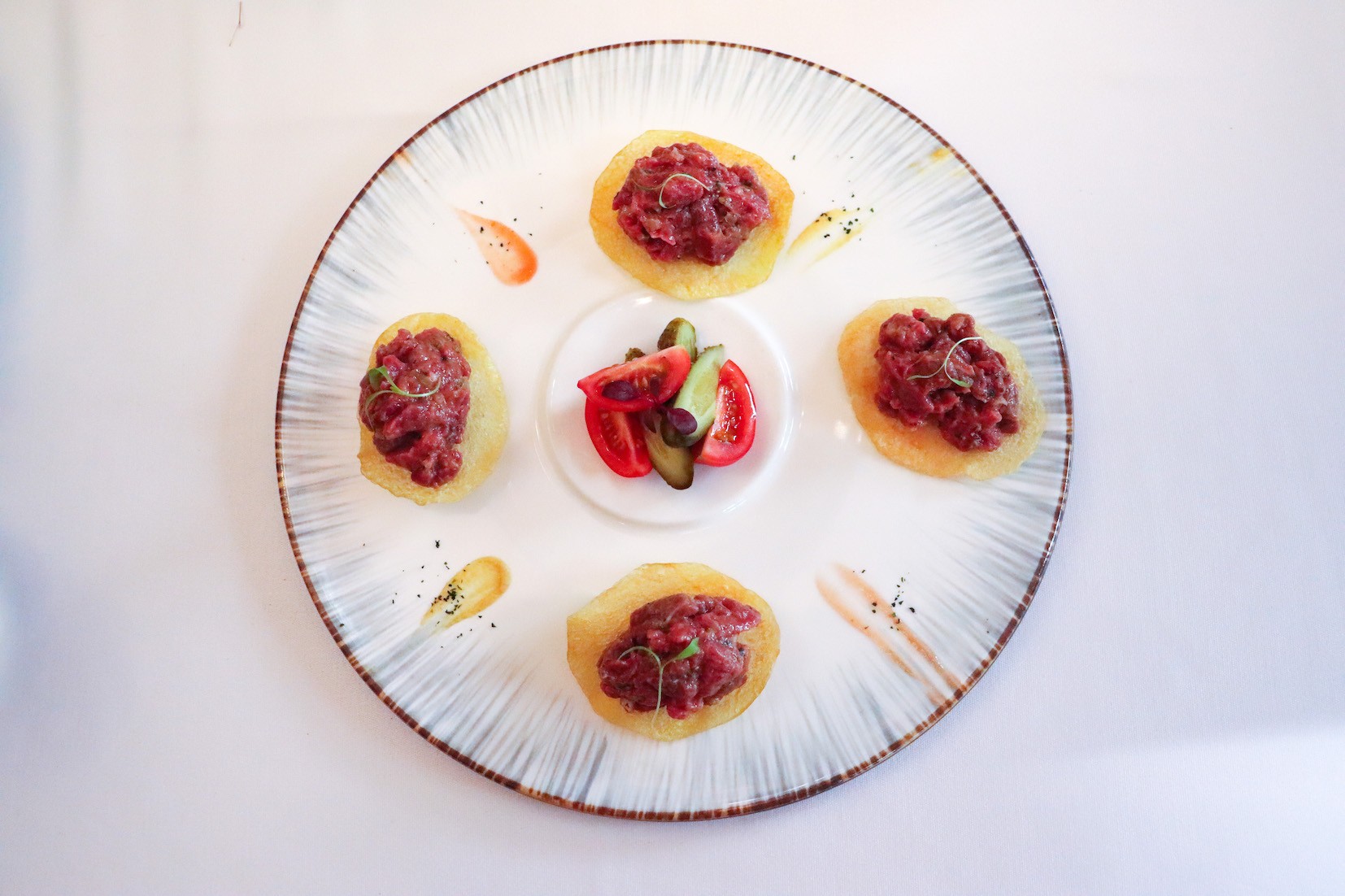















0 User Comments